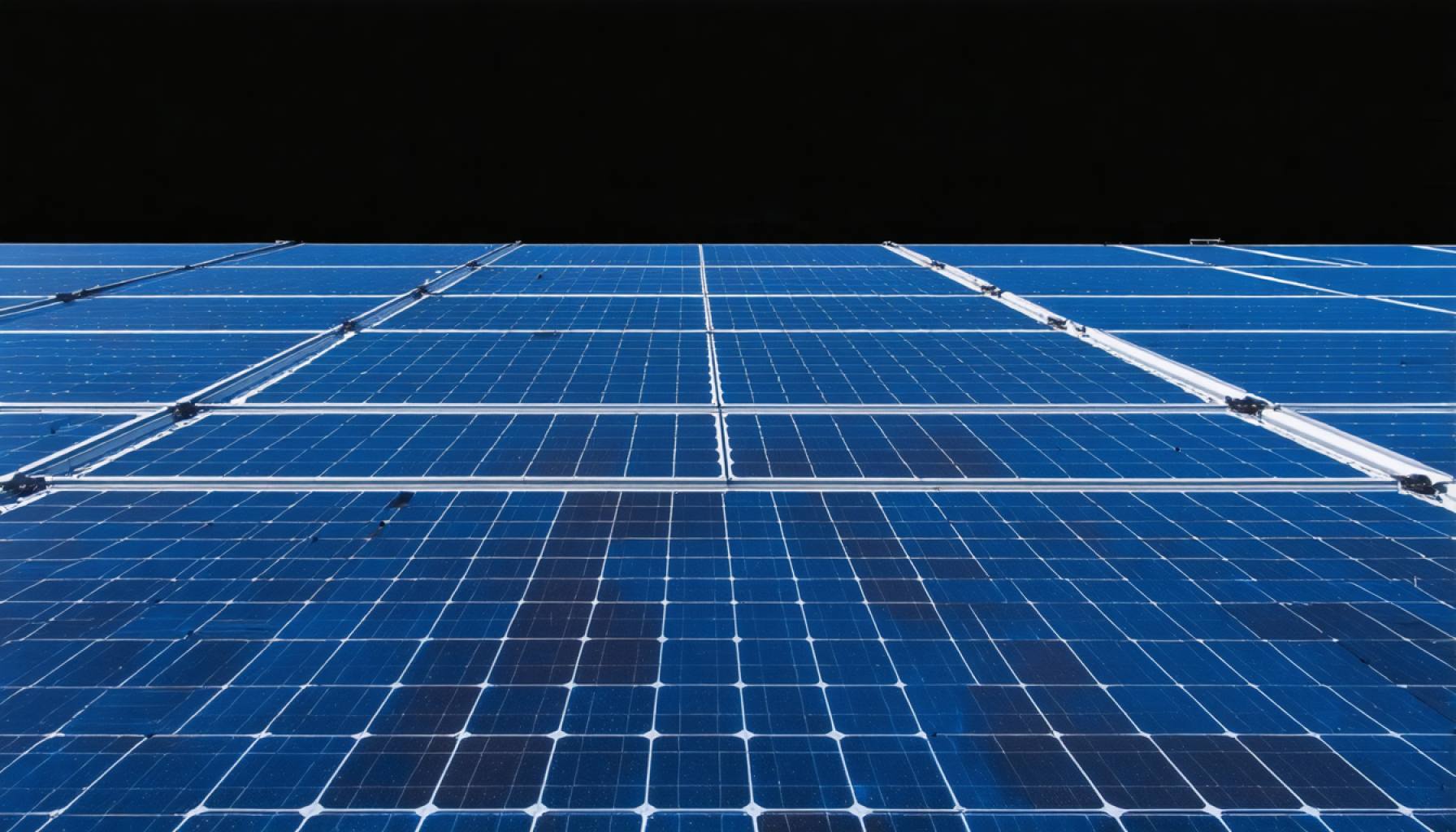- Tenaris launches a $21.5 million solar park in Quelerasi, Romania, supporting its steelmaking operations with 20 MW of renewable energy.
- The project illustrates a crucial move towards decarbonizing traditionally carbon-heavy industries.
- Funded partly by the European Union’s Recovery and Sustainability Plan, it reflects a strong continental focus on greener development.
- The initiative is part of Tenaris’s global efforts, with similar projects in Italy, China, and Argentina.
- Despite anticipated sales dips, Tenaris emphasizes its unwavering commitment to environmental sustainability.
- This project exemplifies how industries can balance economic growth while prioritizing environmental responsibility.
On the outskirts of Quelerasi, a new chapter in sustainable industry unfolds as shimmering solar panels span the landscape, marking a transformative move for Romania’s steelmaking sector. International pipe giant Tenaris has unveiled its pioneering solar energy park—a bold step into the future that intertwines technology and nature. This ambitious $21.5 million project, a fusion of global and regional efforts, injects a 20 MW surge of renewable energy into a traditionally carbon-heavy industry.
Beneath the blue expanse, where steel coils sizzle and forge, the solar park whispers a tale of change. The photovoltaic panels, like mirrors reflecting the ambition of a decarbonized world, generate enough electricity to partially power Tenaris’s bustling steel mill in Quelerasi. The power within these panels represents a 30% contribution from the European Union’s Recovery and Sustainability Plan, underscoring a continental push towards greener pastures—both economically and environmentally.
Dignitaries graced the opening ceremony, a medley of Romanian governmental figures and patrons from afar. They bore witness to Tenaris’s East European President, Mihaela Popescu, as she emphasized this project’s pivotal role in the company’s broader vision to shrink its carbon footprint. This energy park isn’t merely a standalone effort; it’s part of Tenaris’s global thrust to embrace clean energy, with strides also being made in Italy, China, and wind-driven Argentina.
Yet, amid this triumph, the company’s market trajectory takes a slight detour. Tenaris anticipates a modest 5% dip in pipe sales for 2024, a ripple effect of the past year’s economic currents. Still, the commitment to environmental stewardship remains unwavering. As seamless and welded pipes steadily roll off production lines, fewer tons than yesteryear, each carries the promise of a greener world.
This endeavor shines a beacon for industries worldwide, exemplifying how legacy sectors can pivot towards sustainability without losing stride. The key takeaway? Investing in green energy is not merely an environmental choice; it’s an economic imperative, paving pathways for industries to thrive harmoniously with the planet. In Quelerasi, the horizon now brims with light—not just from the sun, but from a forward-thinking journey towards a sustainable tomorrow.
Romania’s Solar Revolution: How Tenaris Is Transforming the Steel Industry
Introduction
In Quelerasi, Romania’s steelmaking industry is undergoing a remarkable transformation. The landscape now boasts shimmering solar panels, marking a significant shift towards sustainability. The $21.5 million solar energy park, unveiled by international pipe giant Tenaris, injects 20 MW of renewable energy into a traditionally carbon-heavy sector. This ambitious project, backed by European Union funding, represents a pivotal moment for industrial innovation and environmental responsibility.
How Tenaris’s Solar Energy Park Works
1. Photovoltaic Technology: The solar park harnesses photovoltaic technology to convert sunlight into electricity. The panels effectively reduce carbon emissions, demonstrating a commitment to renewable energy.
2. Energy Contribution: The park’s generated electricity partially powers Tenaris’s steel mill, contributing to the European Union’s Recovery and Sustainability Plan with a 30% subsidy.
3. Integration with Operations: By integrating solar energy directly into their production process, Tenaris significantly reduces its environmental footprint.
Real-World Use Cases and Industry Trends
– Decarbonizing Heavy Industries: Tenaris’s initiative is a prime example for other industries looking to decarbonize. Steel production, known for high energy consumption and emissions, can leverage renewable sources for sustainable operations.
– Global Green Energy Initiatives: Tenaris is not alone in this pursuit. Their investments extend to Italy and China, while exploring wind energy in Argentina, indicating a global trend towards clean energy in manufacturing.
Controversies & Limitations
– Economic Impact: While the move to cleaner energy is laudable, Tenaris anticipates a 5% decrease in pipe sales for 2024. This dip is attributed to recent economic fluctuations, posing questions about the immediate economic viability of such investments.
– Scaling Challenges: Scaling renewable energy solutions in traditionally carbon-heavy industries remains a challenge, as it requires substantial initial investments and adjustments in supply chains.
Market Forecasts & Industry Predictions
– Growth in Renewable Energy Investments: With increased global focus on sustainability, investment in renewable energies is expected to soar. Companies across heavy industries are likely to follow Tenaris’s lead, integrating renewable energy solutions to stay competitive and compliant with emerging regulations.
– Technological Advancements: Innovations in solar technology could further drive efficiency, reducing costs and increasing the adoption of solar energy in industrial settings.
Actionable Recommendations
1. Evaluate Renewable Solutions: Industries can assess their energy consumption patterns and explore renewable energy solutions tailored to their needs.
2. Seek Funding and Partnerships: Potential subsidies and partnerships with governments or EU bodies can facilitate the transition to sustainable energy, as seen with Tenaris.
3. Monitor Market Trends: Staying informed on energy market trends and technological advancements can provide competitive advantages in adopting clean energy solutions.
For further insights into the broad sustainability efforts in manufacturing, explore resources from the International Energy Agency.
Conclusion
Tenaris’s solar energy park in Quelerasi not only propels the company towards a greener future but also sets a precedent for sustainability in the steel industry. This initiative underscores the importance of renewable energy investments, demonstrating that economic and environmental goals can align harmoniously for a more sustainable tomorrow.
